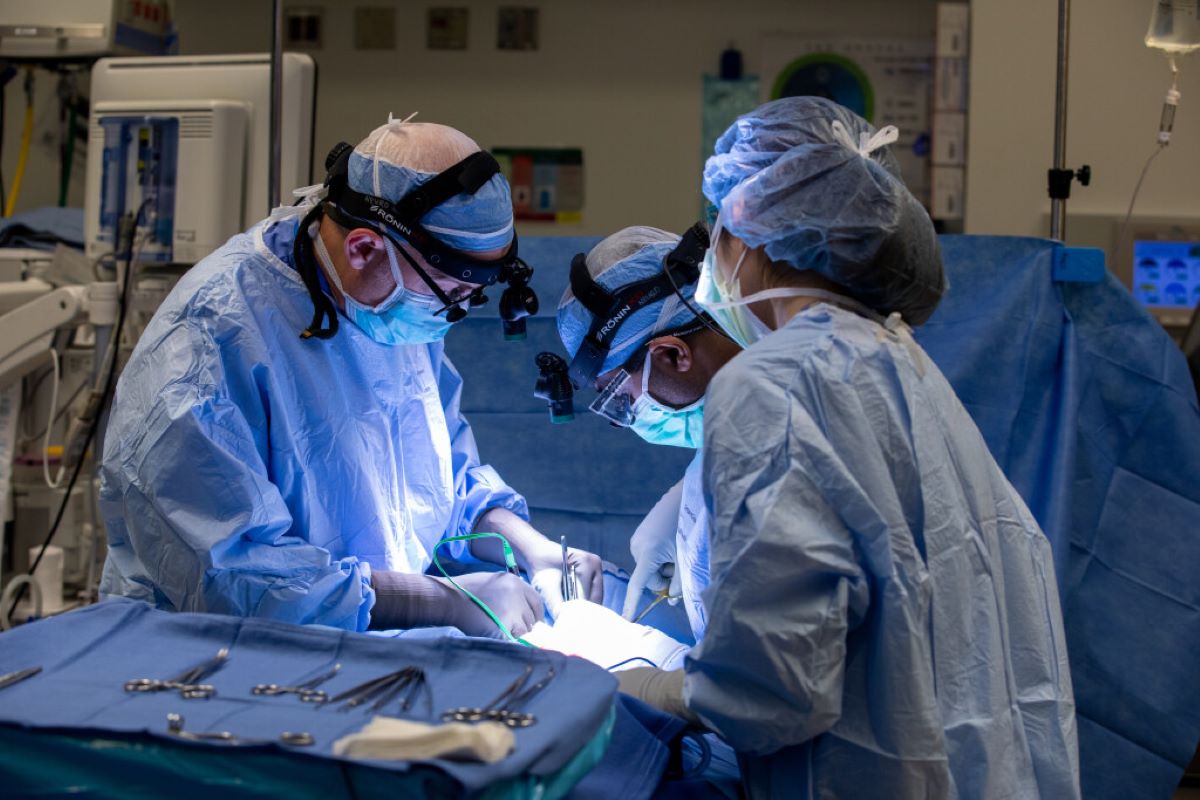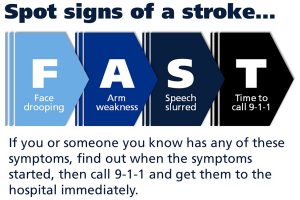Breakthrough stroke treatment at Penn State Health offers patients new hope

For the first seven-and-a-half years after a massive stroke, Donald Yeagle lived his “new normal.” After a week in the intensive care unit at Penn State Health Milton S. Hershey Medical Center, he spent 40 days at Penn State Health Rehabilitation Hospital learning to walk again. But he didn’t regain use of his left arm or hand.
“You just adjust. I learned to use my right hand,” Yeagle, a lifelong lefthander, said.
A pastor at Newville-Shepherds Gate Worship Center Church of God in Cumberland County, Yeagle credits divine intervention for getting him to Milton S. Hershey Medical Center for lifesaving care immediately following his stroke. And he credits God again for putting him at the same place, where during a routine appointment last summer, his neurologist told him about a new treatment for his limited mobility.
The Vivistim Paired VNS (vagus nerve stimulation) System pairs a surgically implanted device with physical or occupational therapy for people who have moderate to severe upper arm impairment following a stroke. The treatment, approved by the U.S. Food and Drug Administration (FDA) in 2021, is designed for chronic stroke patients at least six months to more than 20 years after their stroke — patients like Yeagle.
In 2022, Milton S. Hershey Medical Center became one of the first health care facilities in the country and the first in the state to use the Vivistim. It remains the only hospital in central Pennsylvania that offers it.
“Until very recently, a lot of post-stroke clinical research had been done, but there was little that was promising regarding stroke motor recovery beyond standard physical or occupational rehabilitation therapies,” said Dr. Raymond Reichwein, neurology stroke division chief, co-medical director of the Penn State Health Comprehensive Stroke Center and professor of neurology at Penn State College of Medicine. “With Vivistim, we’re taking neurological-stroke recovery to the next level. It’s also leading to optimal development of post-stroke rehabilitation and recovery networks.”
Game-changing surgery
The first step in the new treatment is a surgical procedure to implant a small device under the skin in the upper chest. The surgeon then attaches the device to a wire under the skin that leads to an electrode placed on the left vagus nerve in the neck. The whole procedure typically takes just over an hour.
“The surgical procedure has been around for decades,” said Dr. Michael Sather, surgical director of the Comprehensive Epilepsy Center at Milton S. Hershey Medical Center and professor of neurosurgery at Penn State College of Medicine. “It’s the device and treatment for chronic stroke recovery that are new.”
About one to two weeks after the Vivistim device is implanted, patients begin intensive rehabilitation therapy — three 90-minute sessions per week for six weeks — focusing on the affected arm, hand and wrist.
During each session, a physical or occupational therapist specially trained in the Vivistim System uses a wireless transmitter to activate the device while the patient participates in neuro-based therapy customized to address their specific deficiencies. Therapy can involve patients repeating targeted arm, hand and wrist motions 30 to 50 times, for a total of about 300 purposeful movements per session.
“Because of the intensive physical therapy I’d had back in 2016 when I learned how to walk again, I knew it would be hard work,” said Yeagle, who completed his therapy sessions at Penn State Health Physical Therapy in Hershey with Pam Hudson, an occupational therapist. “I was fully prepared for it.”
After patients complete the intensive, six-week therapy, they continue with one to two sessions per week, based on their needs. These sessions are provided with a therapist in the clinical setting as well as through self-directed therapy at home. Patients use a magnet to activate their device daily for approximately 30 minutes at a time, up to eight times a day, to work on improving their impairment.
Mark Lionti, who lives in Reading and had a stroke in 2018, went to Milton S. Hershey Medical Center to have his Vivistim device surgically implanted last July. He was able to have all of his subsequent therapy sessions at Penn State Health St. Joseph Medical Center.
Improved function and outlook
Treatment with Vivistim has been shown to improve arm and hand strength and dexterity significantly in select stroke patients. But Reichwein said that Penn State Health patients like Yeagle and Lionti also report a meaningful improvement in their quality of life.
“That’s what’s most important to me,” Reichwein said. “That our patients feel their quality of life is much better with this treatment compared to without it.”
Yeagle said the treatment has opened up his world and given him “a new sense of possibilities. It just expands what you think you’re capable of,” he explained. “I can now think outside of this ‘stroke box’ that I’ve been living in for all these years.”
Currently, Vivistim is only FDA-approved for upper extremities, but Sather hopes it will be studied to help treat other problems associated with stroke, such as leg and speech impairments.
“What’s very interesting about the vagus nerve is that it’s a relatively large nerve with broad connections throughout the brain, so it has the potential to be used for treating various diseases,” Sather said.
For now, people like Yeagle and Lionti are thankful for their improved arm and hand motion resulting from the innovative treatment.
An avid golfer before his stroke, Lionti has recently taken out his putter. He places it in his left hand, covers it with his right and practices putting motions in his basement. “It feels really good to be able to do that now,” he said.
Yeagle is now able to gesture with his left hand during sermons and is practicing his handwriting by using children’s letter-tracing books. Golf — well, golf tees, at least — play a role in his future plans, too, as he looks forward to his next trip to Cracker Barrell with his wife, Gail.
“They’ve got these peg games — these wooden triangle bases with golf tees in little holes,” Yeagle said. He hasn’t been able to play the game since 2016. “Now that I’m moving my fingers, I can’t wait to try moving those tees.”
If you're having trouble accessing this content, or would like it in another format, please email Penn State Health Marketing & Communications.

